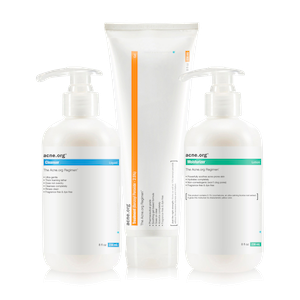The following side effects are expected to occur with the first few weeks of using of tazarotene. Contact your doctor if these symptoms are severe and/or do not go away:
How Common (based on clinical studies)
| Skin peeling or scaling | Up to 51% of all users |
| Redness and/or warmth in the area | Up to 49% of all users |
| Skin irritation, burning, stinging, or tingling sensations | Up to 30% of all users |
| Itching | Up to 29% of all users |
| Dry skin | Up to 27% of all users |
| Swelling and inflammation | Up to 8% of all users |
| Pain at the application site | Up to 5% of all users |
| Rash | Up to 3% of all users |
| Increased skin oiliness | Up to 2% of all users |
| Inflamed or chapped lips | Up to 1% of all users |
| Increased sensitivity to UV rays (photosensitivity) | Up to 1% of all users |
| Swelling and irritation of the eye or eyelid | Unknown |
| Swelling over the arms or legs | Unknown |
| Skin discoloration | Unknown |
Tazarotene may also cause other side effects that are not mentioned here. Contact your doctor if you experience any other troublesome symptoms when using tazarotene.
References
- UpToDate; Tazarotene. Available from: https://www.uptodate.com/contents/tazarotene-drug-information?source=search_result&search=tazarotene&selectedTitle=1~29. Cited 24 December, 2024.
- Bershad, S., et al. Successful treatment of acne vulgaris using a new method: results of a randomized vehicle-controlled trial of short-contact therapy with 0.1% tazarotene gel. Arch. Dermatol. 138(4), 481-489 (2002).
- Saple, D.G., et al. An open study to evaluate the efficacy and safety of tazarotene gel (0.1%) in acne vulgaris. Indian J. Dermatol. Venereol. Leprol. 70(2), 92-95 (2004).
- Shalita, A.R., et al. Effects of tazarotene 0.1% cream in the treatment of facial acne vulgaris: pooled results from two multicenter, double-blind, randomized, vehicle-controlled, parallel-group trials. Clin. Ther. 26(11), 1865-1873 (2004).
- Feldman, S.R., Werner, C.P., and Aliȯ Saenz A.B. The efficacy and tolerability of tazarotene foam, 0.1%, in the treatment of acne vulgaris in 2 multicenter, randomized, vehicle-controlled, double-blind studies. J. Drugs Dermatol. 12(4), 438-446 (2013).
- Shalita, A., Miller, B., Menter, A., Abramovits, W., Loven, K., and Kakita, L. Tazarotene cream versus adapalene cream in the treatment of facial acne vulgaris: a multicenter, double-blind, randomized, parallel-group study. J. Drugs Dermatol. 4(2), 153-158 (2005).
- Leyden, J., et al. Comparison of tazarotene and minocycline maintenance therapies in acne vulgaris: a multicenter, double-blind, randomized, parallel-group study. Arch. Dermatol.142(5), 605-612 (2006).
- Tanghetti, E., Abramovits, W., Solomon, B., Loven, K., and Shalita, A. Tazarotene versus tazarotene plus clindamycin/benzoyl peroxide in the treatment of acne vulgaris: a multicenter, double-blind, randomized parallel-group trial. J. Drugs Dermatol. 5(3), 256-261 (2006).
- Thiboutot, D., Arsonnaud, S., and Soto, P. Efficacy and tolerability of adapalene 0.3% gel compared to tazarotene 0.1% gel in the treatment of acne vulgaris. J. Drugs Dermatol. 7(6) suppl, s3-s10 (2008).
- Pariser, D., Colon, L.E., Johnson, L.A., and Gottschalk R.W. Adapalene 0.1% gel compared to tazarotene 0.1% cream in the treatment of acne vulgaris. J. Drugs Dermatol. 7(6) suppl, s18-s23 (2008).
- DailyMed. Tazarotene. Available from: https://dailymed.nlm.nih.gov/dailymed/search.cfm?labeltype=all&query=TAZAROTENE&pagesize=20&page=1. Cited 24 December, 2024.
 Acne.org Products
Acne.org Products